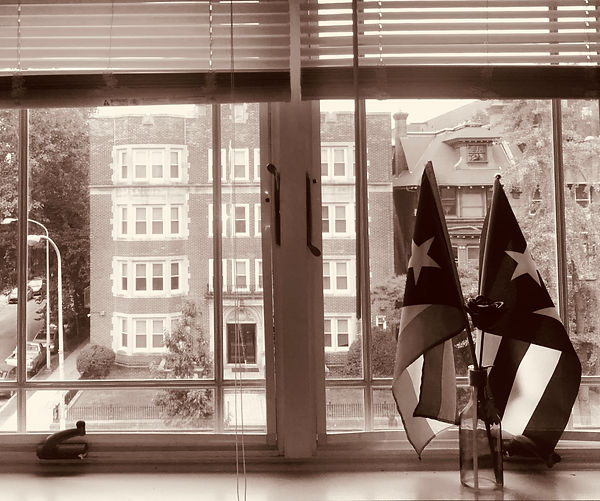PROJECT 3/photo essay






The Development of the Photo Essay
Having produced two types of ethnographic writing, for our third visit to the area (on October 26, 2018), we decided to utilize a different medium—photography—to tell a story of the community. A question from our first visit to the field—“Can a Puerto Rican ever have enough flags?”—inspired the focus of our photographic essay on the presence of Puerto Rican flags in the “Philly Rican” community.
Some historical context: from 1948 to 1957, under Law 53 of 1948 in the Puerto Rican legislature, flying the Puerto Rican flag on the island was punishable by up to 10 years imprisonment and/or a hefty fine. It was found to violate the First Amendment rights of Puerto Ricans and was repealed. The following year, the National Puerto Rican Day Parade in New York City began—full of Puerto Rican flags. To answer the earlier question of whether or not a Puerto Rican can ever have “enough” flags, the answer seems to be a firm “no”.
With a Nikon D7000 DSLR camera and our smartphones in hand, we took to the streets of North Philadelphia again. Given the 2016 design of a Black and White Puerto Rican flag as a symbol of “Puerto Rico en resistencia” to the painful realities of the island’s colonial status (including the unaudited multibillion dollar debt, La Junta Fiscal and austerity measures), we sought to explore the community, and its flags, through photography in black and white. We saw several iterations of Puerto Rican flags—from the standard red, white and blue version to the flag of the town of Lares (home of the independence movement) to the black and white version—hanging on the inside and outside of windows, in store windows, and painted on murals on the sides of buildings throughout the neighborhood. One striking mural image, of the Puerto Rican flag draped over the face of the Statue of Liberty, spoke to a protest by Puerto Rican nationalists almost exactly 41 years ago to the date (October 25,1977). Another—the only picture of something other than a flag—was the sign for “American Street,” which we cross each time we visit the neighborhood.
As part of the process of creating our unified voice, each of us selected six pictures we thought would best represent what we had seen and were trying to convey. We whittled down the twelve images to the six you see above, keeping in mind themes of representation, perceived interiority, coloniality, and resistance. It was a challenging exercise to limit the number of photos and present the project in class without text, but it was useful to explore dimensions of visual representation and the distinct angles it allows the researcher, community and audience to examine without, or in addition to, the written text.
What did you see in the photo essay prior to reading this description and how does the explanation of our process change your understanding of it?